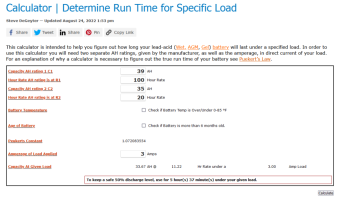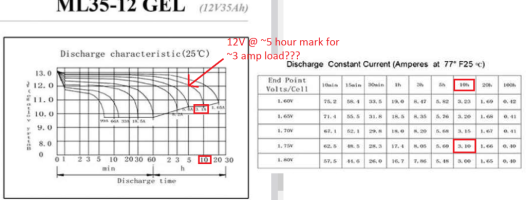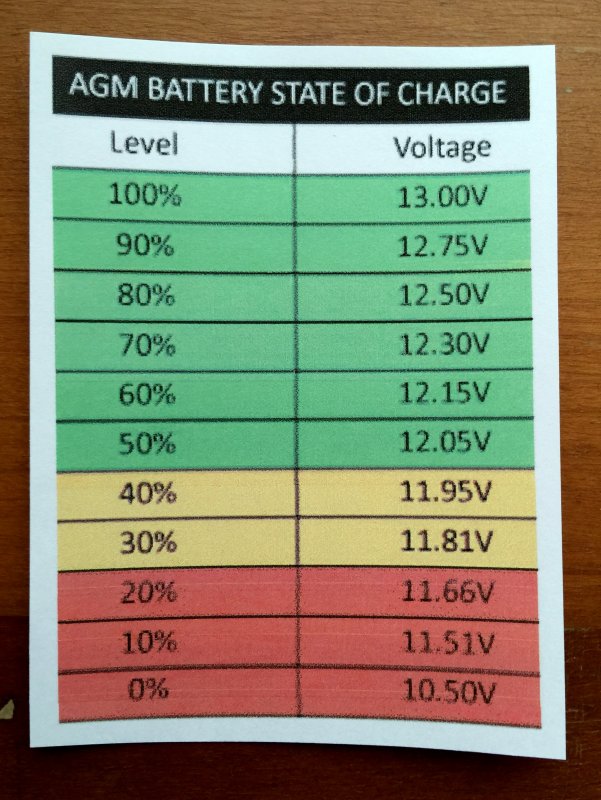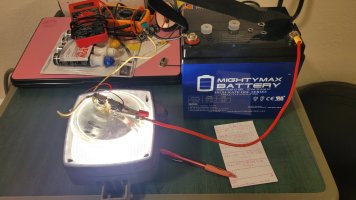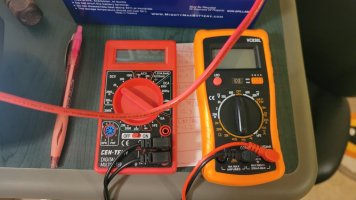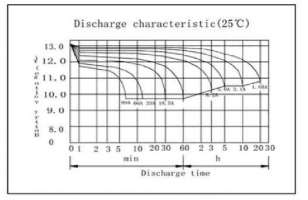Jennifer Rose Towing
Member
I previously made a post about multiple batteries but now looking for help deciphering the battery specs.
I purchased a 35ah MightyMax gel battery. I think I am more confused after reading the spec sheet and would love some clarification.
The main questions are...
1, at what voltage is the battery full?
2, at what voltage is the battery 50% depleted and what voltage is flat dead?
3, running a 3 amp load, how much time should I expect to use it before it gets to a 50% discharge.
Here is where some of my confusion comes in. In looking at the spec sheet, it gives 4 capacity hour ratings for different amp draws. What I do not understand is the voltages listed vary wildly and weather that is a safe rating or presumably completely dead (why/how 11.6v and 9.1v can be the same amount of dead) I am perfectly fine with, and aiming for up to a 50% discharge during use then recharge.
Another point of confusion is The discharge current and power charts. Each give 5 endpoint voltages per cell, I do not understand the point of listing 5 while stating what % of discharge that is. The other thing is massive discrepancies in the watt and amp charts. Using the 1.8 volt at the 1 hour mark, the amp chart says 16.7 amps but the watt chart says 39.7watts. At 12 volts, 16.7 amps would be 200 watts. 3.3 amps would get the 39.7 watts. I must be completely missing something or totally wrong in my comprehension.
The biggest question I have is what voltage is this battery half dead/50%. The info I am finding online indicates that the levels are different for flooded, AGM/gel batteries. I would prefer to understand how the conclusion is those numbers rather then just being handed a number. Been doing a lot of research and getting a lot of conflicting answers. In my mind, under perfect conditions, I should be able to run a 3 amp load on a 35ah battery for about 5 hours and 50 minutes to drain the battery 50%. I know that's not real world but that's the math. I do not know what that would translate to in voltage be able to know where 50% is.
I did send Mighty Max an email asking what a safe depletion voltage level is for this battery but all they replied with was the attached, blurry spec sheet.
I have a decent understanding of starter batteries, and charging scenarios but not deep cycle or gel. Feel free to add anything, post articles/documents ir point me in the rite direction if you have the time.
Thank you.
I purchased a 35ah MightyMax gel battery. I think I am more confused after reading the spec sheet and would love some clarification.
The main questions are...
1, at what voltage is the battery full?
2, at what voltage is the battery 50% depleted and what voltage is flat dead?
3, running a 3 amp load, how much time should I expect to use it before it gets to a 50% discharge.
Here is where some of my confusion comes in. In looking at the spec sheet, it gives 4 capacity hour ratings for different amp draws. What I do not understand is the voltages listed vary wildly and weather that is a safe rating or presumably completely dead (why/how 11.6v and 9.1v can be the same amount of dead) I am perfectly fine with, and aiming for up to a 50% discharge during use then recharge.
Another point of confusion is The discharge current and power charts. Each give 5 endpoint voltages per cell, I do not understand the point of listing 5 while stating what % of discharge that is. The other thing is massive discrepancies in the watt and amp charts. Using the 1.8 volt at the 1 hour mark, the amp chart says 16.7 amps but the watt chart says 39.7watts. At 12 volts, 16.7 amps would be 200 watts. 3.3 amps would get the 39.7 watts. I must be completely missing something or totally wrong in my comprehension.
The biggest question I have is what voltage is this battery half dead/50%. The info I am finding online indicates that the levels are different for flooded, AGM/gel batteries. I would prefer to understand how the conclusion is those numbers rather then just being handed a number. Been doing a lot of research and getting a lot of conflicting answers. In my mind, under perfect conditions, I should be able to run a 3 amp load on a 35ah battery for about 5 hours and 50 minutes to drain the battery 50%. I know that's not real world but that's the math. I do not know what that would translate to in voltage be able to know where 50% is.
I did send Mighty Max an email asking what a safe depletion voltage level is for this battery but all they replied with was the attached, blurry spec sheet.
I have a decent understanding of starter batteries, and charging scenarios but not deep cycle or gel. Feel free to add anything, post articles/documents ir point me in the rite direction if you have the time.
Thank you.


